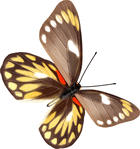|
|
|
||||||||||||||||||||||||||||||||||||||||||||||||||||||||||||||||||||||||||||||||||||||||||||
|
|
|
||||||||||||||||||||||||||||||||||||||||||||||||||||||||||||||||||||||||||||||||||||||||||||
|
|
|||||||||||||||||||||||||||||||||||||||||||||||||||||||||||||||||||||||||||||||||||||||||||||
|
|
|
||||||||||||||||||||||||||||||||||||||||||||||||||||||||||||||||||||||||||||||||||||||||||||
|
|
|
|
|
||||||||||||||||||||||||||||||||||||||||||||||||||||||||||||||||||||||||||||||||||||||||||
|
Maolin : Purple butterfly valley
Sources:Written by Mr. Jhan Jia-long Every winter, it is conservatively estimated that at least a million Euploeini butterflies glide on purple wings to the holy mountain of the Rukai and Paiwan Tribes in south Taiwan and take shelter in warm valleys at the foot of Dawu Mountain. About six hundred thousand butterflies winter in "Purple Butterfly Valley", which along with the Monarch butterfly's winter home in Mexico is one of only two mass wintering sites known in the world. "Purple Butterfly Valleys" exist only in the medium and low altitude regions of Kaohsiung, Pingtung and Taitung counties, in the traditional homelands of the Paiwan and Rukai tribes. At present there are about twenty butterfly gathering places known in the area, and the Maolin area of Kaohsiung County is home to at least seven.
Purple
Butterfly Valley is not a specific geographical name; but a term
used by butterfly researchers to represent the biological
phenomenon of Euploeini butterflies overwintering en masse.
Every winter, at least four species of purple crow butterfly (or
The
Euploeini's glistening blue and purple wings seem to change
their hue in sunlight, and were thus named "llusory Light" by
Japanese insect researchers. The Euploeini are "milkweed"
butterflies and their grubs feed upon the poisonous leaves of
milkweed plants. The toxins are stored in the adult butterfly's
body, making them distasteful to most predators. It is believed
that the adult's vivid coloration is actually a biological
defense mechanism, warning predators who try them once not to
try again. Reference: http://www.maolin-nsa.gov.tw/maolin/index.php?lang=ct&style=style2 |
|||||||||||||||||||||||||||||||||||||||||||||||||||||||||||||||||||||||||||||||||||||||||||||
|
|||||||||||||||||||||||||||||||||||||||||||||||||||||||||||||||||||||||||||||||||||||||||||||




